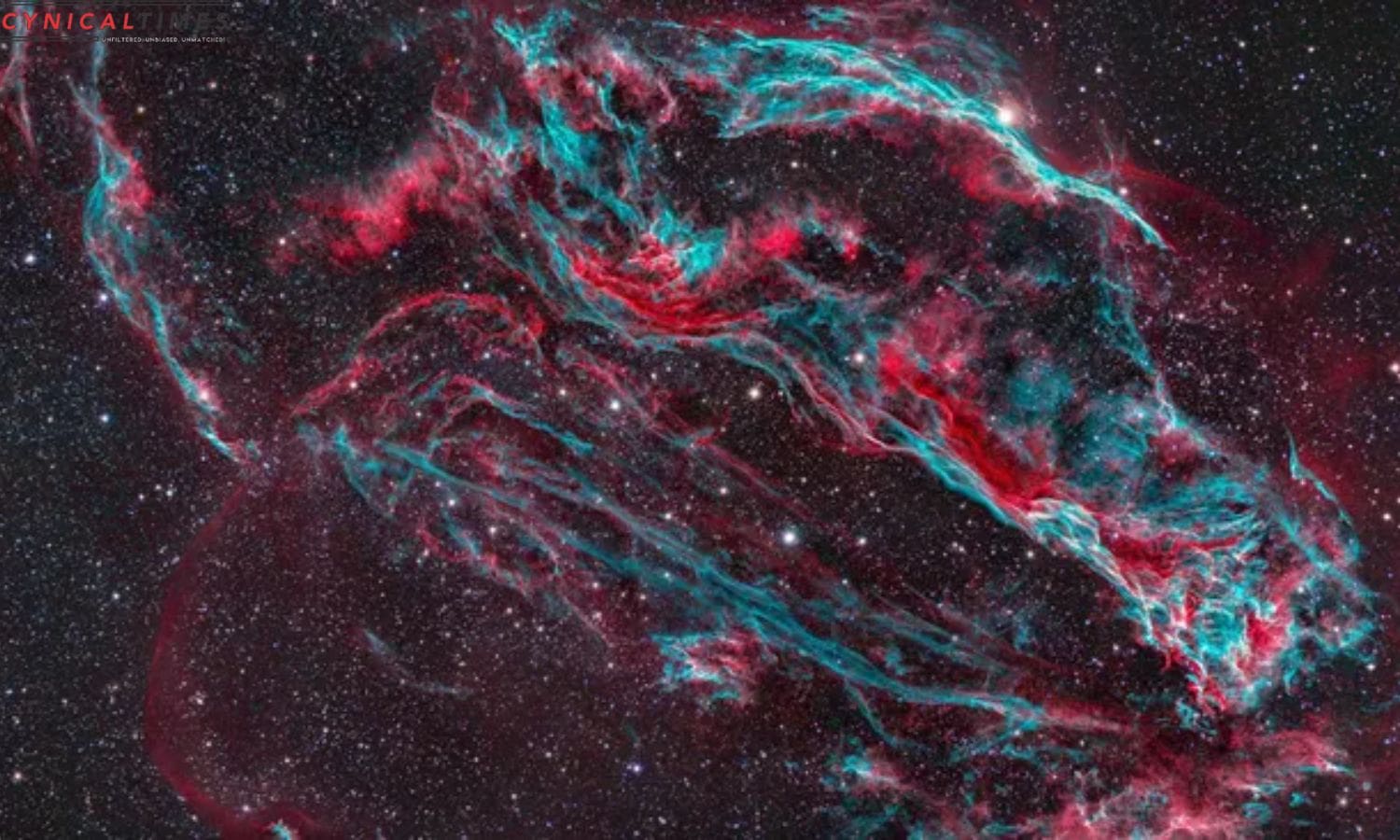Cosmic Ballet Veil Nebula: Miguel Claro, a renowned photographer and astronomy communicator from Lisbon, Portugal, captures the celestial beauty of the night sky. As an ESO Photo Ambassador and astrophotographer for Dark Sky Alqueva Reserve, he specializes in creating mesmerizing astronomical “Skyscapes” that bridge Earth and the cosmos.
One of his masterpieces is the Veil Nebula, also known as the Cygnus Loop, formed from a colossal supernova explosion around 10,000 years ago in the Cygnus constellation, 1,400 light-years away. Discovered by William Herschel in 1784, the nebula’s intricate filaments of ionized gas showcase the remnants of the explosive event, expanding over 70 light-years.
The image reveals the reddish hues of atomic hydrogen gas and the blue-greenish tones of atomic oxygen gas. Alongside the Veil Nebula, notable features include the Witch’s Broom Nebula (NGC 6960), highlighted by the brilliant star 52 Cygni, and Fleming’s Triangular Wisp (NGC 6979), along with NGC 6974a sizable nebula filament at the northern edge of the Veil Nebula loop.
Captured from the Dark Sky Alqueva observatory in Portugal, the image utilized various wavelengths, including Ha, OIII, and RGB light. The Anit-Halo PRO Dual-Band 3nm filter and a Poseidon-C Pro Camera from Player One Astronomy were employed in this breathtaking composition. The annotated version, utilizing PixInsight script and referencing known catalogues, identifies key celestial objects within the image.
Also Read: Cosmic Symphony Mysterious Deep Space Whistles Unveiled
Our Reader’s Queries
Can you see the Veil Nebula?
Even smaller telescopes equipped with an O-III filter can capture the stunning beauty of the nebula. In fact, some experts claim that it can even be seen without any optical aid, except for an O-III filter held up to the eye. The brighter parts of the nebula are designated in the New General Catalogue as NGC 6960, 6974, 6979, 6992, and 6995.
Who discovered the Veil Nebula?
In 1784, astronomer William Herschel stumbled upon the Veil Nebula. Later on, Williamina Fleming discovered a fainter section of the nebula, which was named Pickering’s Triangle, in 1904.
What is the central star of the Veil Nebula?
The Veil Nebula’s origin story is nothing short of epic. The supernova explosion that birthed it was so massive and intense that it’s earned the nickname “The Titanic Explosion.” Nestled at the heart of this celestial wonder lies a neutron star, or perhaps even a black hole.
Is the Veil Nebula an emission nebula?
The Cygnus Loop, also known as radio source W78 or Sharpless 103, is a massive supernova remnant located in the Cygnus constellation. This emission nebula spans almost 3° and features several arcs, collectively referred to as the Veil Nebula or Cirrus Nebula, that emit visible electromagnetic radiation.

